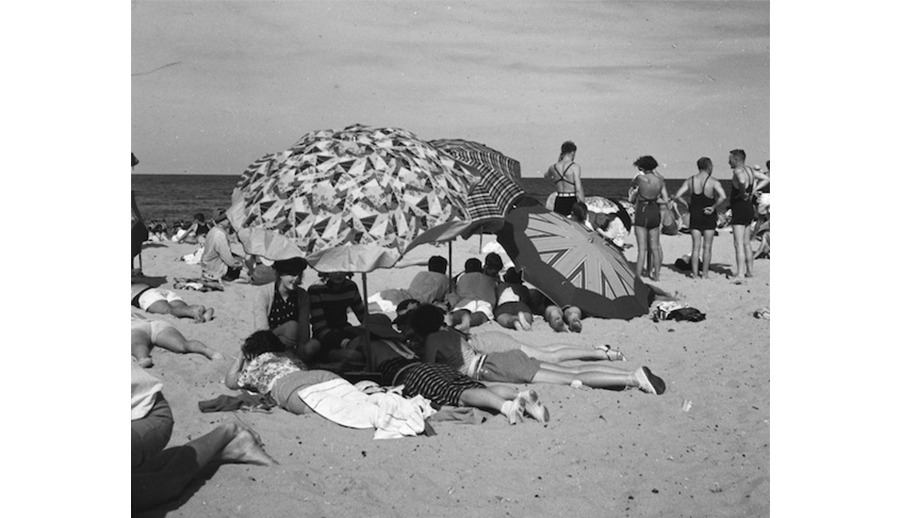Henri Mallard's 'Collaroy' - Discussed by Art Gallery of New South Wales Resources Librarian Eric Riddler

Henri Mallard's 'Collaroy' - Discussed by Art Gallery of New South Wales Resources Librarian Eric Riddler
New Year’s Day, 1935, and the beach at Collaroy is crowded with colourful beach umbrellas and daring backless swimsuits for both women and men. Not everyone is joining in the backless craze. Several of the beachgoers are wearing cardigans and pullovers, belying an unseasonably mild January day (not getting above the low twenties Celsius, according to the Sydney Morning Herald [‘Meteorological reports’, 2 January 1935, p 11]). Tellingly, there seem to be few beachgoers actually in the surf.
It’s a black and white slide, uncoloured, but we can get some idea of the colour of the time from paintings of Sydney’s northern beaches made at the same time, like Maud Sherwood’s The beach, Dee Why (1936), in the Te Papa collection in Wellington, New Zealand.
People on the lookout for time travelling hipsters may be drawn to the man just to the right of the umbrellas, wearing the particularly daring swimming trunks with narrow back straps. To 21st century eyes he may appear to be talking into a mobile phone but I suspect that, like the woman adjusting her swimsuit in Max Dupain’s Form at Bondi (1939), the man is doing something more mundane, like tapping seawater out of his left ear (he was clearly one of the brave souls willing to test the waters).
The popularity of backless swimming costumes and the push to allow men (but not women) to sunbath topless on public beaches were contentious issues in 1930s Australian beach culture. Not long before Mallard took this photograph, Eric Spooner, the Assistant Treasurer of New South Wales, announced that tighter regulations for swimming costumes would be introduced for the next summer [‘Bathing costumes: Spooner butts in: Skirts and no bare chests’, National Advocate [Bathurst], 14 December 1934, p 6].
Immodest swimming costumes were not only a public decency problem [‘Scanty bathing costumes’, Daily Examiner [Grafton], 28 December 1934, p 4]. The popularity of backless costumes had reduced the summertime demand for wool, and graziers dreaded any further loss of business [‘Graziers don’t want trunks’, Newcastle Morning Herald and Miners’ Advocate, 8 August 1938, p 6].
Perhaps the bravest fashion choice among the sunbathers seen in Mallard’s slide, however, would be the fine art deco evening shoes worn by one of the women towards the lower right. Perfect for dinner at Romano’s and a screening of The gay divorcée at the Regent Theatre but not the most practical beachwear.











